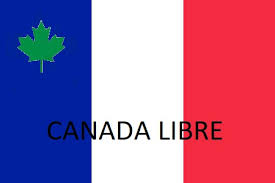LAGRANGE 2 AND COSMIC EQUILIBRIUM...
The five Lagrange points, in the system
formed by the Sun, Earth and the Moon.
The world deeply needs harmony but has to accept some degree of tension.
The launch of the James Webb Space Telescope is a case in point. It just flew aboard an Ariane 5 rocket, from the European spaceport, located at Kourou, in the département of la Guyane française, Papillon's country, made famous for its bagne and bagnards, just like the Anglosphere's own Australia, a land whose past is full of gaols and jailers, at least in its european period.
Its destination is Lagrange 2, a theoritical point situated on a straight axis, not on the portion of that axis between Terra and Sol, but on the portion that is on the opposite side of that axis, i.e. the much longer one between Terra and infinity. It is about 1.5 million kilometres from Earth, so about four times the distance from Terra to its natural satellite, la Lune, a.k.a. Sélène, which is another way to say the Moon.
From there, it would be in a position to see further than ever before, from a very privileged place. That point was chosen carefully, obviously to minimize the glare from Terra's numerous cities, and also to minimize the light coming from Sol, on the other side of the Earth/Sun axis, shielded as it would be by Terra.
The advent of that spatial telescope and the inscreasing use of the Lagrange points underline the fact that the focus of human activity in space is slowing leaving the Earth's lower orbit and gaining altitude, in a manner of speaking. L2 is much farther away from the Earth than the Moon.
It is a demonstration that the tools of humankind are becoming more prevalent and more present in the First Frontier, the one that includes the Moon and Mars, the nearests spatial bodies to us. The two other frontiers are 1) the one that includes Mercury and Venus, the two planets nearest Sol, sunward to us, bodies much less hospitable than Sélène and Barsoom, and 2) the one that start from (but does not include) Mars and goes outward to the farthest reaches of the Solar System, as far as the influence of our Sun can be felt.
The five points are places that are in equilibrium between gravitational influence coming from two main bodies (not counting the Moon in this instance). It's all about celestiac mechanics, essentially. Mass creates gravity, that creates concavities in the tissue of space, if seen in a two-dimensional fashion. Those holes creates the opportunity, today, long after Lagrange's death, to place artificial objects there, where they are in a state of relative equilibrium, torn as they are between different forces, tensions of unequal strenght, somewhat like a piece of tissue in a tug-of-war, what is called in French souque à la corde. Each Lagrange point is a place where the gravitional forces are the centrifugial forces are in balance.
Joseph-Louis Lagrange was born Guiseppe Luigi Lagrangia, in 1736, in what would eventually become Italy in the following century. Excellent representative of the Siècle des Lumières, the XVIIIth century, probably the most glorious period of French civilization and renown, he moved first to Prussia, in what would become (again in the following century) Germany. Incidentally, the fact that Germany and Italy are two European countries that were the object of a violent unification process, done in a forceful, military way, in the XIXth century, the age of the Industrial Revolution and apex of England and the United Kingdom, is not alien to the fact that they were both attracted to the militaristic adventure of fascism at the end of the First World War. Both countries were relatively brand-new, with little tradition of democracy, and both were the product of a virulent strain of ethnic nationalism, pushed to the extreme, in a far-right political atmosphere, in the first half of the XXth century, America's time in the limelight. After Prussia, Lagrange went to Paris, just before the French Revolution, became a Frenchman, and stayed there till the rest of his life.
Today's world is as complex and twirling as the XVIIIth, the XIXth or the XXth century. With China poised to succeed and replace the United States as the most powerful and dominant country of the XXIe century (the one that belong to the Middle Kingdom and will certainly see impressive advances in the domains of space exploration, space exploitation and space colonization), the pivot of human life will pass from Europe to Asia. Then, afterward, it is difficult to see farther in the darkness of the future, except to say that asiatic India and Black Africa would became quite more important than they are right now, at the present time.
Stay tuned.
L'histoire de l'humanité en quelques mots,
du noir de la nuit des temps au noir de l'espace le plus profond...
A more precise schematic that enable one to better understand the celestial mechanics behind the Lagrange points. The lines that look like magnetic or topographic indications are in fact representative of gravitational forces (ondes gravitationnelles). Each of the indicated bodies exert an influence upon the surrounding tissue of space, creating holes where human objects can sit, in a more or less stable fashion. The telescope will orbit around L2.





Commentaires
Enregistrer un commentaire
Bonjour, tous les commentaires sont acceptés, dans la mesure où ils sont d'ordre professionnel. Insulteurs s'abstenir...